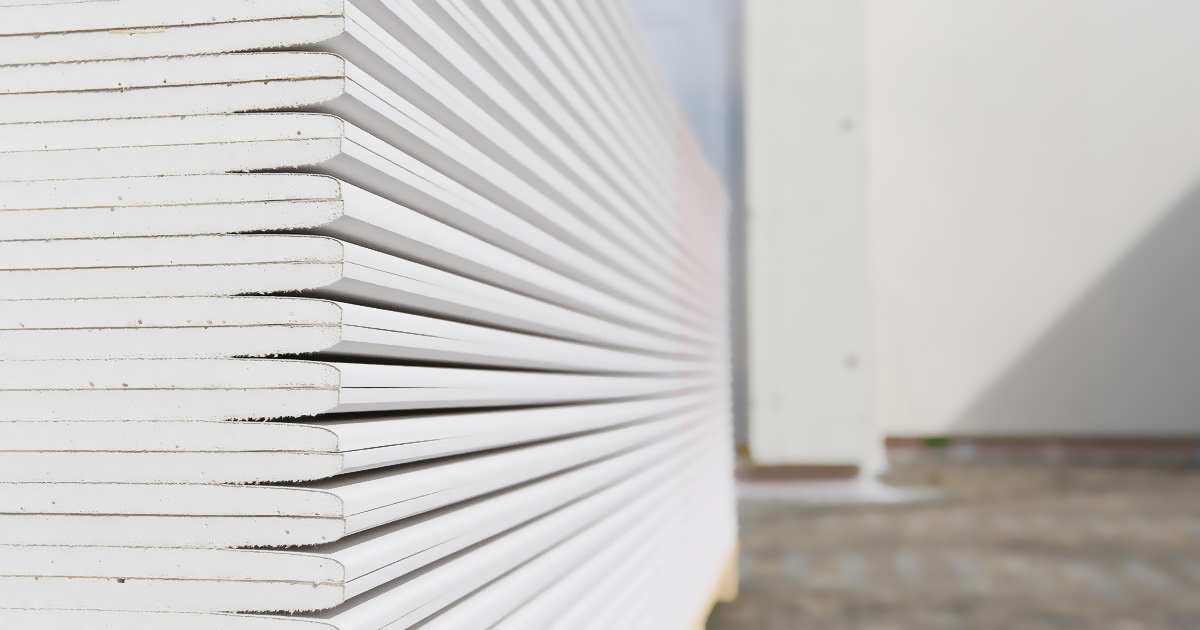
Drywall Industry is on the rise.
And sustainability is becoming part of the standard
A growing market with growing responsibility
The global drywall market is expected to reach USD 75.44 billion by 2031, growing at a CAGR of 5.3% (Market Growth Reports). As demand rises, so does the urgency to rethink how we build and how we reduce the impact of the construction sector on our planet.
We are now facing the real-time effects of an ecological crisis. Climate change is no longer a distant threat, but an immediate challenge. Governments, companies, and individuals are all working toward the European Union’s goal of carbon neutrality by 2050. However, while we recycle, drive electric vehicles, and reduce household consumption, the built environment remains a blind spot.
39% of global CO₂ emissions come from buildings
Yes, 39%.
And with the global population expected to approach 10 billion by 2050, the number of buildings will need to double to meet demand. Without change, that means doubling the problem.
Dry construction systems offer a scalable solution. They are faster to install, require fewer resources, and offer far better insulation compared to traditional wet masonry. This makes drywall systems not just practical, but essential to climate resilience.
What makes construction emissions so high?
According to the UN Environment Programme, the built environment accounts for 39% of total carbon dioxide emissions, split between two categories:
Operational emissions
These are caused by the everyday use of buildings (heating, cooling, electricity). They represent 28% of global CO₂ emissions.
Drywall systems help lower these emissions by:
- Improving thermal insulation
- Reducing the need for heating and cooling
- Allowing thinner walls with less energy loss
Embodied emissions
These come from materials, manufacturing, transportation, installation, and demolition. They represent 11% of global CO₂ emissions, and are harder to mitigate, but not impossible.
That’s where product design and material sourcing make the difference.
The role of drywall in a decarbonised construction future
Drywall systems are lightweight, efficient, and increasingly produced with renewable or recycled resources.
Gypsum, the key ingredient in gypsum boards, is a renewable material that can be recycled multiple times without loss of quality.
When paired with recycled liner paper, drywall becomes a sustainable solution, reducing emissions both during production and throughout the building’s lifecycle.
Compared to traditional concrete or wet masonry:
- Drywall systems require less water and energy to install
- Produce less waste on-site
- Are easier to recover or recycle at the end of life
How Alier is contributing to the transition
We produce 100% recycled liner paper for plasterboard, helping manufacturers reduce the environmental footprint of their drywall products. But we go further than paper:
- We work with manufacturers to optimise product specs
- Provide traceability across the supply chain
- Develop custom solutions that support both business and sustainability goals
Dry construction is not just a market trend; it’s a necessity. And at Alier, we’re committed to helping the sector scale up responsibly.
Let’s build better, together
Whether you’re adapting to new regulations or leading on innovation, we can support your goals. With decades of expertise in recycled materials and a dedicated focus on low-impact manufacturing, Alier is a strategic partner in sustainable construction.
Contact our team to find out how we can help you reduce emissions, optimise processes, and build the future of construction.
